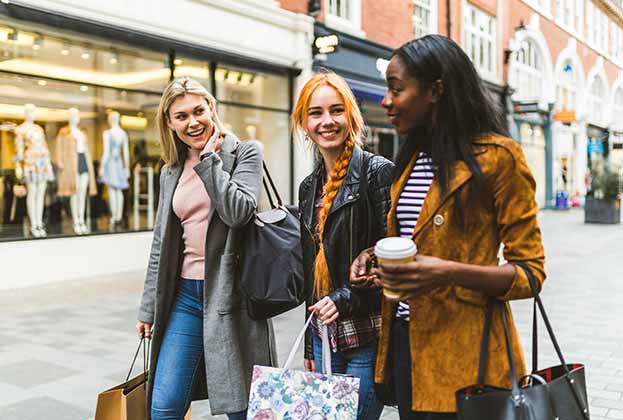In the last few months we’ve been inundated with information on the impact of Covid-19 on the retail market, but while there are significant problems in the sector, to really consider the future we need to keep things in perspective, avoid the headlines and consider the long term - accepting of course that the next 18 months may well be a rough ride.
What we’re seeing now is the accelerated evolution of a number of key trends we’ve been witnessing for some time. The only new trend is the advent of social distancing and this shouldn’t be with us forever. So, at the risk of over-generalising several complicated issues, what are the key themes?
Ecommerce accounts for just 19 per cent of retail spend and while this will increase post Covid-19, most spend remains affiliated in some way with the store.
Grocery sales online have spiked in recent weeks, but from a low base, and while online gardening sales have grown we don’t expect consumers to make a long-term shift to purchasing plants online instead of visiting a garden centre.
For many goods and services people still like the tangible instore experience, and two months spent inside won’t change that. Ecommerce will undoubtedly take a greater share of consumer spend, but this has long been coming and we already know retail spaces need to adapt to account for it.
Retail failures will rise in the coming months, but this again follows an existing trend. Usually brands that fail are those that have grown too quickly or lost touch with their customers, and out of failure breeds opportunity. Disruptors find new ways of connecting with consumers and delivering what they want, when they want it, and this will result in new concepts and interesting places.
Economic uncertainty has been in the consumer mindset for a while, with Brexit and before that the Global Financial Crisis (GFC), and while economic turbulence can be painful, we know that retail does adapt.
Post GFC consumers quickly moved to a value and convenience-based mindset and, while we are no doubt now seeing more consumers move online, we can’t assume that everyone will completely their change their shopping habits. Consumers are not about to leave shops and restaurants for good.
Of course, no amount of optimism gets us away from the fact that our relationship with retail has been evolving for some time, reducing the need for retail provision, or forcing change into a more diverse and compelling offer. The oversupply of retail space has been creeping up on us for a while and, Covid-19 or not, is reaching a critical moment in which we need to radically change our thinking of retail destinations and town centres.
What do we do with excess space? Do we reposition or repurpose it? Often the answer is both, with demand remaining for new retail concepts that fit with existing consumer preferences.
Dynamic retail will survive and mixed use spaces will thrive. It’s not one size fits all, but most places have something that consumers need. The clever bit is working out what that need is.
Further information
.jpg)



.jpg)

.jpg)



.jpg)